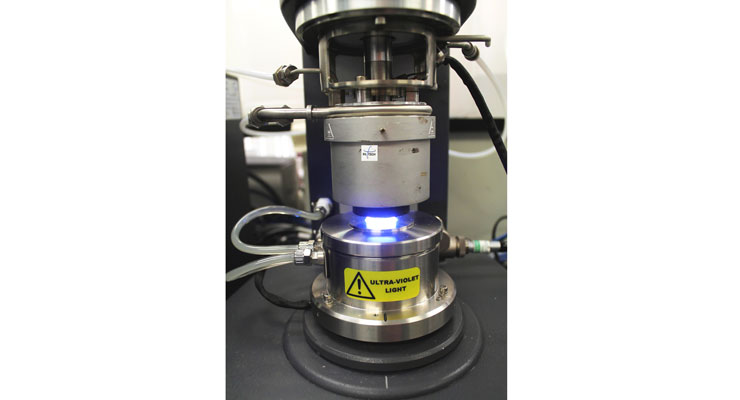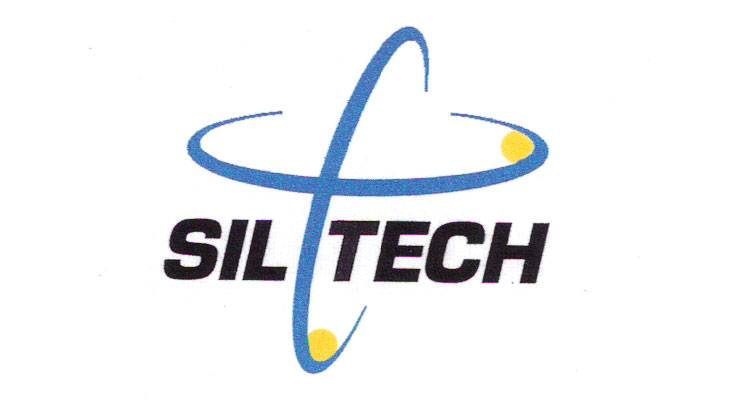David Savastano, Contributor Editor04.18.22
The field of energy curing (EC) is making gains in a wide range of markets, including paints and coatings. Eileen Weber, a member of RadTech’s Board of Directors and global marketing manager radcure for allnex, offers her insights into the growth of energy curing in paint and coatings.
Weber has served as a member of RadTech’s Board of Directors for nine years, and also served as president from 2019-20. Prior to joining allnex, Weber was at Red Spot Paint & Varnish for 21 years. She has her bachelor of arts in chemistry from the University of Southern Illinois and her executive MBA from the University of Evansville.
There are some more mature areas for EC technologies while others are in introduction or early growth stages. And of course, the past couple years with the pandemic and supply chain challenges, these have impacted EC as with every other technology. Nonetheless the overall outlook and growth potential is still quite positive.
When it comes to LED, there are nice advantages vs. traditional UV, like the lower energy and temperature output, its portability for field applications and the elimination of mercury to name a few. And as LED lamps have become more powerful, more capable and more economical, this makes the business decision to go LED more practical.
However, the fit for LED still depends on application, desired throughput and performance needs. Within printing, for example, applications like wide web inkjet, flexo and sheetfed offset are having good success with LED. Also, applications like adhesives and fillers/putties fit well with LED, especially as they do not require as high of dosage or as much UVC light exposure for cure and performance.
However, high performance applications like many industrial coatings and OEM automotive coatings where surface cure is more critical for performance, these are not yet as conducive for conversion to LED.
Overcoming negative perceptions is also a challenge. EC has been around for many years, and some of the early coatings came with sensitization concerns mainly due to a lot of low molecular weight materials with high Draize ratings. The technology has very much advanced from this, but there still remain some of those health & safety hesitations.
Finally, to mention, cost can be a challenge as the initial investment for equipment is more expensive. Also, the unit cost of coating in can is more due to the higher solids content, but the required film weight of the cured film to achieve performance is often less. To determine the benefit, there needs to be a well-rounded assessment that considers initial cost for equipment and consumables as well as applied unit cost, run cost, work in process savings.
With the shorter time to cure, this greatly reduces exposure to contamination and so there can be a reduction in scrap. Finally, in the case of UV cure, as it doesn’t cure until it is exposed to light, in some cases, the overspray can be collected and reused further reducing waste. These have been long standing advantages of EC technologies, and this value proposition certainly becomes more interesting with the increased focus on sustainability.
From the perspective of Recycle, EC can offer benefits here as well. There has been some bad press in regards to a negative impact of EC on recyclability. However, there are numerous uses and success stories of EC technologies used in recyclable applications.
Finally, looking from a renewable perspective, there are bio-based options commercially available and under development.
To support the shift to LED cure, we also have developed a range of boosters that enhance the cure profile and performance and with a much more favorable labeling profile vs. standard aminobenzoate materials.
Weber has served as a member of RadTech’s Board of Directors for nine years, and also served as president from 2019-20. Prior to joining allnex, Weber was at Red Spot Paint & Varnish for 21 years. She has her bachelor of arts in chemistry from the University of Southern Illinois and her executive MBA from the University of Evansville.
CW: Are you seeing growth in energy curing technologies in the paint and coatings market?
EW: Yes, energy curing technologies continue to show strong growth in paint, coatings and inks markets. From RadTech market surveys, we see on average, growth has been and is expected to continue in the range of 4% to 7%, but really diving into it, there is a range in the growth rates by region and application.There are some more mature areas for EC technologies while others are in introduction or early growth stages. And of course, the past couple years with the pandemic and supply chain challenges, these have impacted EC as with every other technology. Nonetheless the overall outlook and growth potential is still quite positive.
CW: What markets are you seeing the strongest growth in?
EW: We are seeing nice growth in the coatings, inks and adhesives related to packaging and labels as well as in more emerging areas like 3D printing/additive manufacturing, plastics coatings, composites and electronics, to name a few.CW: Are there any segments within the paint and coatings field where EC has a significant share of the market?
EW: There are a few market segments that come to mind where EC has enjoyed good success with significant use. These include automotive forward lighting for both reflector and lens coatings, inkjet in a variety of applications like labels and graphics, kitchen cabinetry, flooring, printed circuit boards and fiber optics.CW: What paint and coatings segment is seeing the fastest growth in usage of EC?
EW: Probably 3D printing and inkjet are the two with the fastest growth rate among EC. Several other applications though have higher than average growth rates, including barrier and conductive films, food packaging and field applied coatings.CW: Are you seeing UV LED growing faster than traditional UV, and if so, what is driving this expansion?
EW: In terms of percent growth, LED is growing at a faster rate than traditional UV, but the baseline is much smaller.When it comes to LED, there are nice advantages vs. traditional UV, like the lower energy and temperature output, its portability for field applications and the elimination of mercury to name a few. And as LED lamps have become more powerful, more capable and more economical, this makes the business decision to go LED more practical.
However, the fit for LED still depends on application, desired throughput and performance needs. Within printing, for example, applications like wide web inkjet, flexo and sheetfed offset are having good success with LED. Also, applications like adhesives and fillers/putties fit well with LED, especially as they do not require as high of dosage or as much UVC light exposure for cure and performance.
However, high performance applications like many industrial coatings and OEM automotive coatings where surface cure is more critical for performance, these are not yet as conducive for conversion to LED.
CW: What are the biggest challenges for energy curable technologies in paint and coatings?
EW: On of the biggest challenges is still the lack of knowledge and comfort level with the technology. Although there are many applications using EC technology, many people are still unfamiliar or just learning about it. The terminology is a bit different too vs. conventional cure coatings, so we talk about energy sources and the power, exposure and dosage levels vs. bake times and temperatures. It’s not necessarily complex, but it is different.Overcoming negative perceptions is also a challenge. EC has been around for many years, and some of the early coatings came with sensitization concerns mainly due to a lot of low molecular weight materials with high Draize ratings. The technology has very much advanced from this, but there still remain some of those health & safety hesitations.
Finally, to mention, cost can be a challenge as the initial investment for equipment is more expensive. Also, the unit cost of coating in can is more due to the higher solids content, but the required film weight of the cured film to achieve performance is often less. To determine the benefit, there needs to be a well-rounded assessment that considers initial cost for equipment and consumables as well as applied unit cost, run cost, work in process savings.
CW: Are energy curable technologies considered sustainable?
EW: Energy curable technologies have a lot of sustainable benefits, especially in the Reduce viewpoint of the 3 R’s (Reduce, Recycle, Reuse). The fact that EC technologies are high solids to 100% solids make them more environmentally friendly reducing or eliminating VOCs. Also, there is reduction in the energy demand for cure vs. conventional bake systems, especially with LED cure.With the shorter time to cure, this greatly reduces exposure to contamination and so there can be a reduction in scrap. Finally, in the case of UV cure, as it doesn’t cure until it is exposed to light, in some cases, the overspray can be collected and reused further reducing waste. These have been long standing advantages of EC technologies, and this value proposition certainly becomes more interesting with the increased focus on sustainability.
From the perspective of Recycle, EC can offer benefits here as well. There has been some bad press in regards to a negative impact of EC on recyclability. However, there are numerous uses and success stories of EC technologies used in recyclable applications.
Finally, looking from a renewable perspective, there are bio-based options commercially available and under development.
CW: Are you working on any new energy curing technologies that you may wish to mention?
EW: allnex has a strong focus on developing resins with increasing levels of bio-content, especially for industrial wood applications.To support the shift to LED cure, we also have developed a range of boosters that enhance the cure profile and performance and with a much more favorable labeling profile vs. standard aminobenzoate materials.





